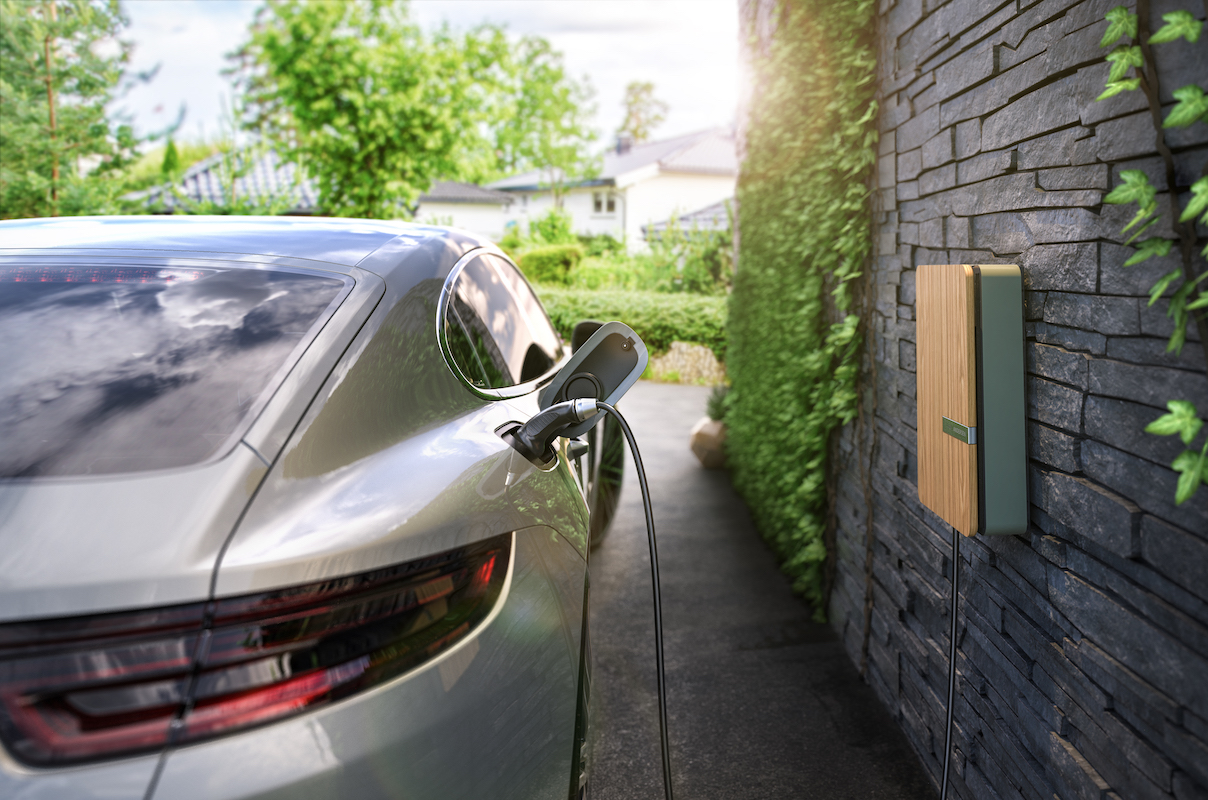This website uses cookies so that we can provide you with the best user experience possible. Cookie information is stored in your browser and performs functions such as recognising you when you return to our website and helping our team to understand which sections of the website you find most interesting and useful.
Why electric car accessories and charging points must embrace the same ethos of design and efficiency as futuristic EVs
By Polly Jean Harrison | 17 July 2020 | Cars & Yachts
Andersen founder David Simpson on the future of EV charge points

Once considered something of an eco-warrior’s gimmick, electric vehicles have seen a tipping point in the last decade as even the biggest automotive brands embrace new electric technologies to appeal to its environmentally conscious clientele. From ground-breaking concepts by Tesla and Czinger, to prestige manufacturers like Aston Martin and Lotus, the world’s most forward-thinking automotive companies are now electrifying their lines as standard.
It’s an obvious indication of the changes to come. Add to that the UK’s February announcement that it will ban the sale of petrol, diesel and hybrid cars from 2035 and the fact that all new-build houses in England are already being fitted with electric vehicle charging points as standard, it’s time to embrace all things electric, says British company Andersen. Combining high performance with discreet and elegant design, Andersen offers high-end home charging for electric vehicles and aims to offers its affluent clients sleek, sustainable technology unlike anything else on the market. Here, we speak to Andersen co-founder and technical director David Simpson about the company’s inspiration, the importance of planning for sustainability and how brands like Tesla are leading the charge on the future of E-mobility.
What was the inspiration for starting Andersen?
My co-founder Jerome and I knew that E-mobility was going to be a big thing. We started researching the industry and found there was no innovation in home charging, so we set off on a journey to make elegant, high performance, sustainable charge points to fill that gap. Our install team is very much a white glove service, and we’re planning to expand that service to be a one stop shop for all sorts of products; batteries, solar panels etc, and offer a rapid response support system. A lot of people tend to view a charge point as a car accessory – like a roof rack – but that’s really not the case. I think you have to look at charge points like architectural furniture: why would you want a big ugly white plastic box by your front door? We identified that there was a market for something more aesthetically pleasing, which is the original premise for our business.
Why is the sustainability of your charge points so important to you?
Personally, it pains me that we've become a very throwaway society. No-one fixes anything anymore; everything ends up in a landfill. E-mobility is meant to be a sustainable industry, so I think it would be slightly ironic if we built plastic charge points that only last three years and then throw them away. That's not in the spirit of this new emerging industry. So, what we're trying to do is build products that have longevity to them, they can be upgraded or repaired, so we’re not putting plastic in the ground. We promise our clients that we have the parts for 10 years ahead; we want to have a long-term relationship with them. A charge point is a mission critical device: if you can’t charge your car to go to work then that’s a huge issue, so we work on building very strong, robust products that work in very harsh environments – all while looking sleek and elegant. >>
Related: Automobili Pininfarina's design director shares the brand's driving ambition to create the world's first zero-emissions hypercar

Where does your design inspiration come from?
We’re always very mindful to not over-design our products. Our main inspiration for projects is a very Scandinavian, stripped down design, where we have a timeless style that still looks good today. The touch and feel of the product are also very important. We pride ourselves on using proper metal machine parts and real timber, rather than just using cheap coloured plastic. If you’re going to use your charge point every day, we want to pay a lot of attention to detail.
When do you think was the turning point for the popularity of electric vehicles?
Whether you‘re a fan of Tesla or not, Elon Musk has been a mascot for E-mobility, and he brings a certain sort of brand to it, even to making his SpaceX rockets. If you asked a 12-year-old to name a cool car, they’d probably say a Tesla rather than a Lamborghini. So, there's a whole new perception in the younger generation that really shows how attitudes have changed. Also, there’s been a definite change in society over the past couple of years when it comes to the climate crisis, and how we’re messing up our planet. We don’t know if we’re able to stop it now, but people are realising that we all have to play our part to try and help.
There has been a lot of news around the reduction of emissions as a result of the Covid-19 lockdowns – do you think this has helped boost in interest in electric vehicles?
Yes and no. I think it has a little bit as it’s a big news story and, as people have more time on their hands, they can look into it a bit more. In reality, I think the biggest change is actually taxation: for example tax has made it very expensive to own a company car. The government incentivising drivers with reduced tax for sustainable vehicles will really increase the interest.
What do you think is the future for electric vehicles? What can we expect to see the next few years?
I think we'll see a drop in price but, in the UK, I think brands’ concentration will be on increasing driving ranges, and the infrastructure needs to improve. When we start seeing petrol stations with rows of superchargers, then we’ll know it's really changing.
What are the practical implications of switching to electric vehicles? How can we prepare for that transition?
Charging anxiety is probably the number one concern for someone who is thinking of transitioning to electric cars. A charge point is going to be the one of the most powerful things in the home. To quantify that, a 7kW charger would be like having 10 microwaves on for five hours, so you have to make sure you can get enough power in your house. A more basic factor would be whether you have space to install a charge point, and somewhere to charge your car. People in London and big cities, like myself, find this very challenging because often we don’t have private parking, so it’s something to think about. I think the transition to electric vehicles is going to be much easier if you live outside of a city.








